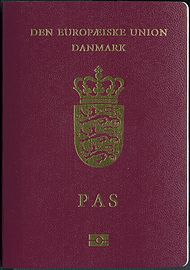
A French passport is an identity document issued to French citizens. Besides enabling the bearer to travel internationally and serving as indication of French nationality, the passport facilitates the process of securing assistance from French consular officials abroad or other European Union member states in case a French consular is absent, if needed.

Hungarian passports are issued to Hungarian citizens for international travel by The Central Data Processing, Registration and Election Office of the Hungarian Ministry of the Interior. Every Hungarian citizen is also a citizen of the European Union. The passport, besides the national identity card allows for free rights of movement and residence in any of the states of the European Union, European Economic Area and Switzerland.

Croatian passport is issued to citizens of the Republic of Croatia for the purpose of international travel. The passport has the purpose of serving as proof of Croatian citizenship and identity. Responsibility for their issuance lies with the Ministry of the Interior; and for citizens abroad, passports are issued by the local embassy or consulate. Croatian passports are valid for ten or five years, and are not renewable. Every Croatian citizen is also a citizen of the European Union. The passport, along with the national identity card allows for free rights of movement and residence in any of the states of the European Economic Area and Switzerland.

Japanese passports are issued to Japanese nationals to facilitate international travel. From 2018 to 2022, it was ranked first on the Henley Passport Index for visa-free travel, and third as of July 2023, with holders able to travel visa-free to 189 countries and territories.

The Danish Realm, officially the Kingdom of Denmark, refers to the area over which the monarch of Denmark is head of state. It consists of metropolitan Denmark—the kingdom's territory in continental Europe and sometimes called "Denmark the proper" —and the realm's two autonomous regions: the Faroe Islands in North Atlantic and Greenland in North America. The relationship between the three parts of the Kingdom is also known as The unity of the Realm.

A Norwegian passport is the passport issued to nationals of Norway for the purpose of international travel. Beside serving as proof of Norwegian citizenship, they facilitate the process of securing assistance from Norwegian consular officials abroad.

Swedish passports are issued to nationals of Sweden for the purpose of international travel. Besides serving as proof of Swedish citizenship, they facilitate the process of securing assistance from Swedish consular officials abroad.

An Austrian passport is an identity document issued to citizens of Austria to facilitate international travel. Every Austrian citizen is also a citizen of the European Union. The passport, along with the national identity card, allows for free rights of movement and residence in any of the states of the European Economic Area and Switzerland.

The European Union itself does not issue ordinary passports, but ordinary passport booklets issued by its 27 member states share a common format. This common format features a coloured cover emblazoned—in the official language(s) of the issuing country —with the title "European Union", followed by the name(s) of the member state, the heraldic "Arms" of the State concerned, the word "PASSPORT", together with the biometric passport symbol at the bottom centre of the front cover.
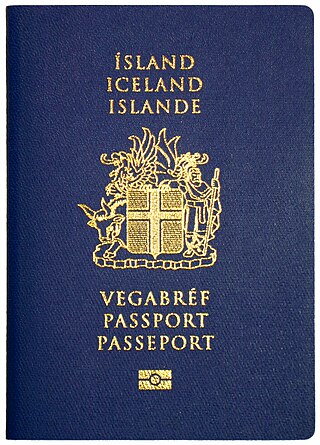
Icelandic passports are issued to citizens of Iceland for the purpose of international travel. Beside serving as proof of Icelandic citizenship, they facilitate the process of securing assistance from Icelandic consular officials abroad. As of 2023, 94.9% of Icelandic citizens possess an Icelandic passport. It is one of three official documents issued by the Icelandic government, the others being the Icelandic identity card and the Icelandic driving licence.

The Algerian passport is an international travel document issued to citizens of Algeria, and may also serve as proof of Algerian citizenship. Besides enabling the bearer to travel internationally and serving as indication of Algerian citizenship, the passport facilitates the process of securing assistance from Algerian consular officials abroad.

Danish nationality law is governed by the Constitutional Act and the Consolidated Act of Danish Nationality. Danish nationality can be acquired in one of the following ways:
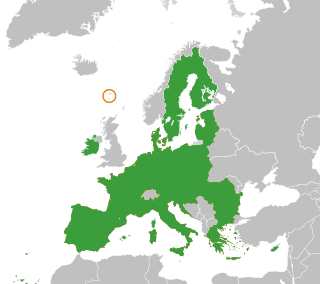
The Faroe Islands, a self-governing nation within the Kingdom of Denmark, is not part of the EU, as explicitly asserted by both Rome treaties.
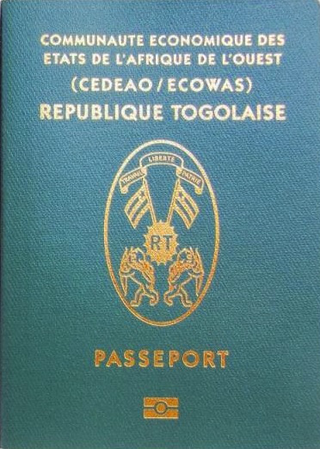
Togolese passports are issued to Togolese citizens to travel outside Togo. Togolese citizens can travel to member states of the Economic Community of West African States (ECOWAS) without a passport, national ID cards are sufficient.

Moroccan passports are issued to nationals and citizens of Morocco for the purpose of international travel. Besides serving as a proof of Moroccan citizenship, they facilitate the process of securing assistance from Moroccan consular officials abroad if needed. Since 15 December 2009, a biometric passport was available for all new applicants. Moroccan citizens can now apply for a passport anytime, anywhere. Launched in tandem with the new enrollment program, a web portal outlining issuance requirements takes applicants through the procedure step by step, from the comfort of their keyboard. Once proof of identity has been gathered, the applicant can fill in an online form to print and submit in person at the prefecture.
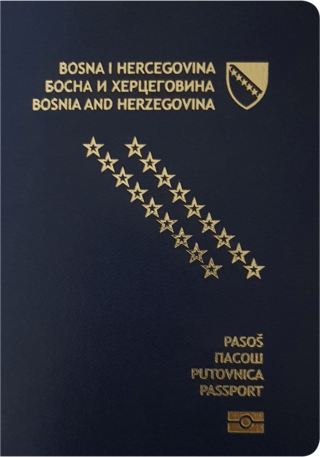
The Bosnia and Herzegovina passport is a passport issued to citizens of Bosnia and Herzegovina for international travel.

National identity cards are issued to their citizens by the governments of most European Economic Area (EEA) member states, the exceptions are Denmark and Ireland. Ireland however issues a passport card which is a valid document in the EEA and Switzerland. Denmark issues simpler identity cards that are not valid as travel documents. From 2 August 2021, new identity cards are harmonized as a common identity card model replaced the various formats already in use.
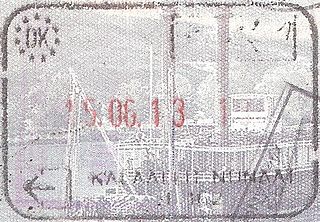
The visa policy of Greenland consists of the requirements for foreign nationals to enter and remain in Greenland.

Passports of the EFTA member states are passports issued by the European Free Trade Association (EFTA) member states Iceland, Liechtenstein, Norway and Switzerland. EFTA is in this article used as a common name for these countries.

Passports in Europe are issued by each state individually, e.g. the Netherlands or United Kingdom. In general, passports issued in Europe either grant the holder the right of freedom of movement within the European Economic Area, to those that don't. The majority of European states are members of the European Union, and therefore issue EU passports.
